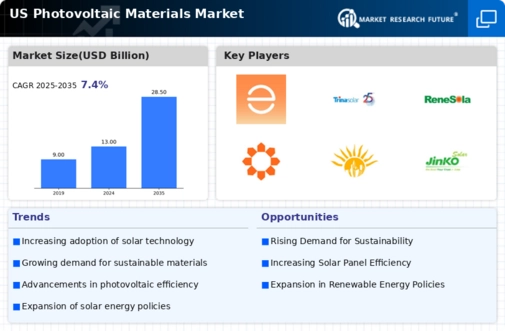The US Photovoltaic Materials Market is characterized by a dynamic landscape, driven by technological advancements, policy support, and increasing consumer adoption of solar energy solutions. This market is influenced by a variety of players ranging from established giants to innovative startups, each striving to capture a larger share of the growing demand for renewable energy. Competitive insights reveal a landscape where companies are relentless in their pursuit of efficiency, cost reduction, and sustainable practices to carve a niche in this ever-evolving market.
As renewable energy sources gain popularity, the competition intensifies, with firms constantly innovating and adapting their strategies to meet the diverse needs of residential, commercial, and utility-scale segments.Enphase Energy has established a significant presence in the US Photovoltaic Materials Market, specializing in the development of advanced energy management technology and microinverters. The company is known for its innovative solutions that optimize energy production and enhance the efficiency of solar systems, leading to increased consumer appeal and satisfaction. Enphase Energy’s strengths lie in its commitment to technological innovation and quality, which has fostered a loyal customer base.
Additionally, the company has built a robust distribution network, enabling it to reach a wide audience across the US. Its focus on software-control and monitoring systems has set it apart in the market, empowering users with better energy management capabilities and driving the transition towards smart energy consumption.Trina Solar holds a formidable position in the US Photovoltaic Materials Market, recognized for its comprehensive portfolio of solar products, including high-efficiency solar panels and complete photovoltaic solutions.
The company’s strengths include a strong emphasis on research and development, which allows it to introduce cutting-edge technologies that enhance the performance and reliability of its offerings. Trina Solar has effectively expanded its market presence through strategic partnerships and collaborations, enhancing its distribution and service capabilities in the US. The company’s commitment to sustainability is evident through its manufacturing processes, positioning it favorably among environmentally-conscious consumers. Furthermore, Trina Solar has engaged in several mergers and acquisitions, bolstering its market share and enhancing innovation initiatives, which collectively contribute to its prominent stature in the US photovoltaic landscape.























Leave a Comment